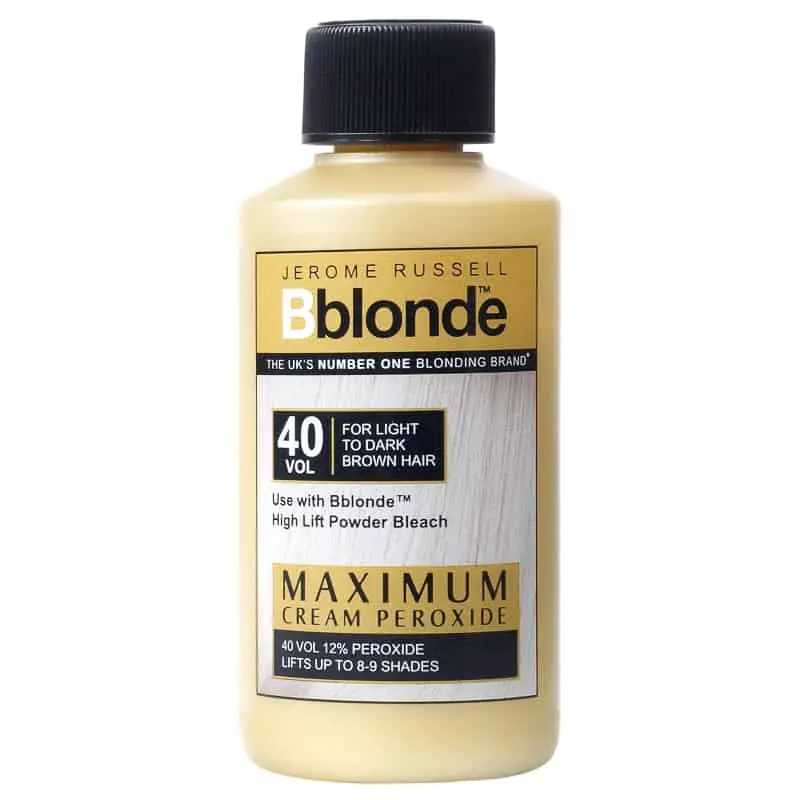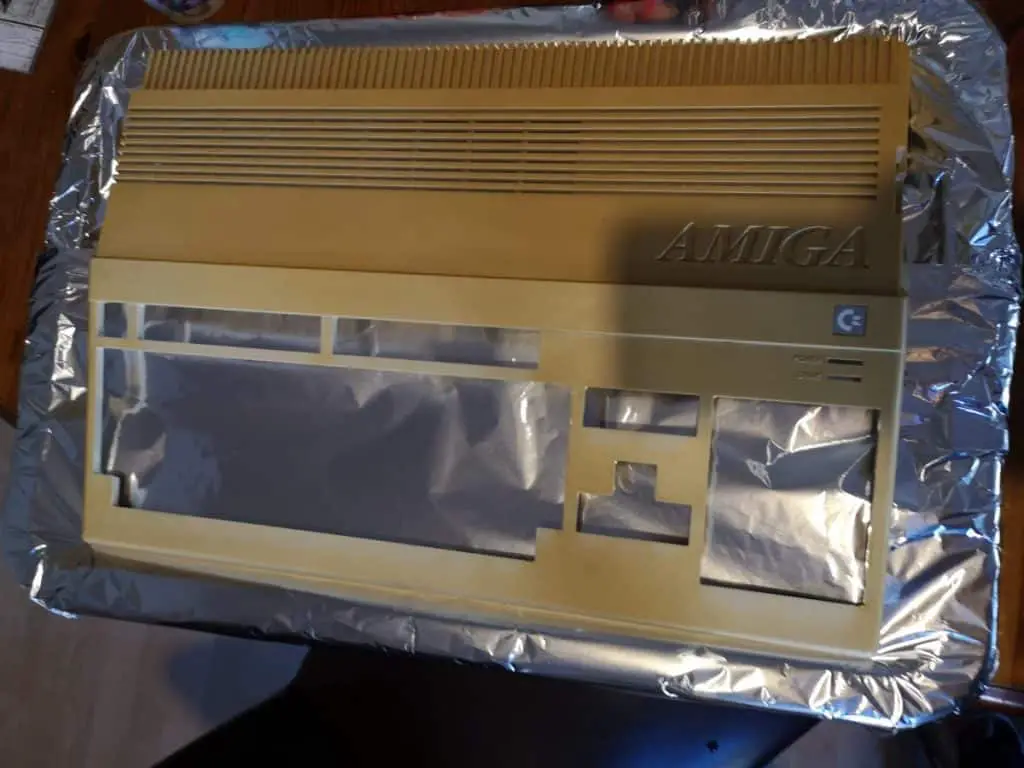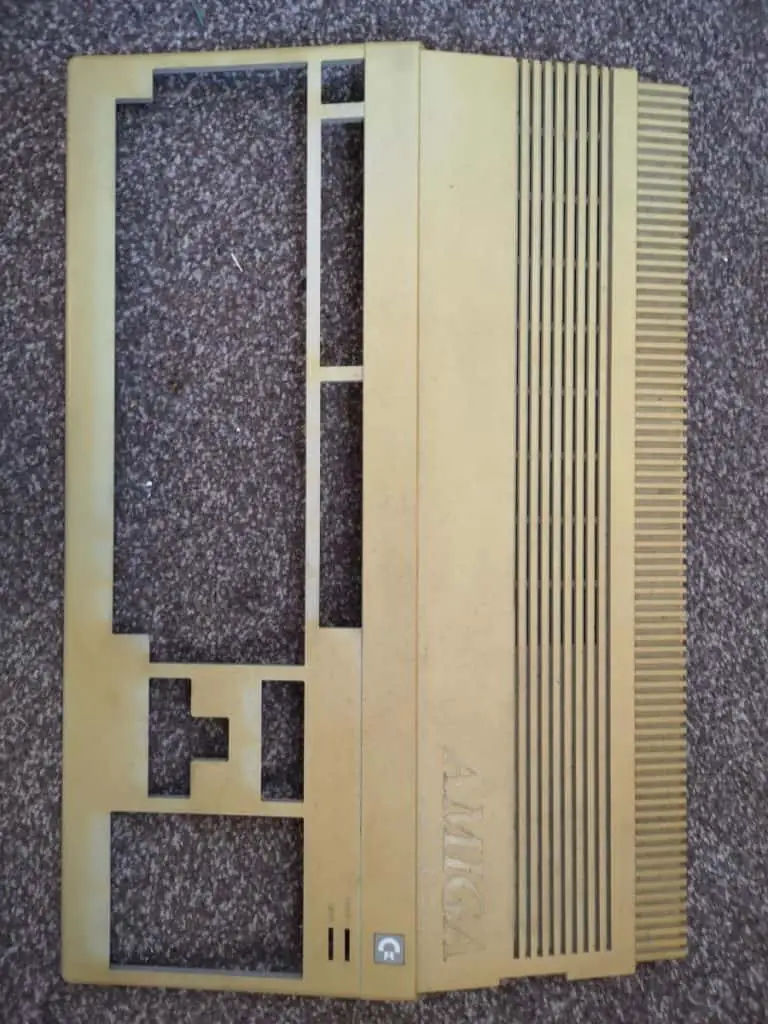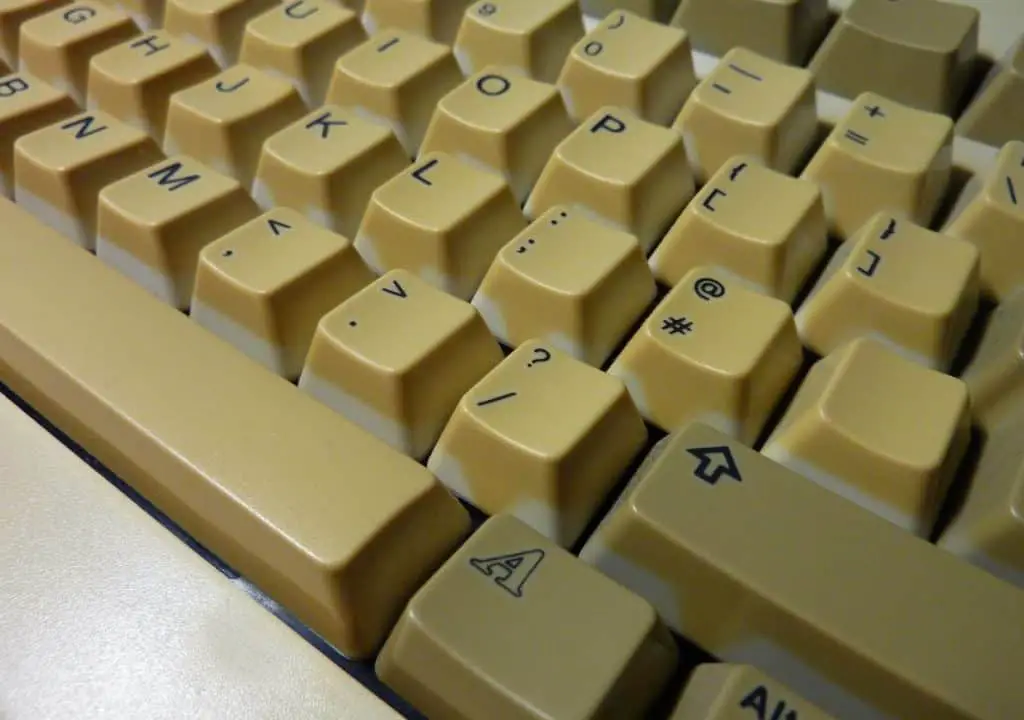Ive had my commodore amiga 500 computer since 1989 and when i purchased it, it was a crisp clean cream color. But after getting it out of the attic after a few years, it appeared to have completely changed color. It was now a more of a patchy yellow color that looked quite discusting. The keyboard was even worse. It now appeared to be brown. Yuck!!! Ive always looked after my computers and this not was how i expected it to look. The condition of the case looked as if it had been abused over the years and had never been cleaned.
It appears on closer inspection that its not dirty at all, but the plastic has actually darkened in color. This is due to light and heat exposure over time.
After hours of research on the internet it seems its possible to reverse this damage with something as simple as hair bleach. Yeah the kind my girlfriend puts in her hair to make it blonder. So I did some experiments….
I removed the top part of the case and coated it in a thick layer of hair bleaching peroxide. This here is the exact stuff…

So I completely covered the amigas case in it, wrapped some foil around a large tray to make it as reflective as possible and put it out in the sun for about 4 hours. Here is a picture of the case before I put the peroxide on it. As you can see it looks like shit.

So after about 4 hours I brought it in and rinsed of the peroxide so I could have a closer look to see if it worked at all.
As you can see from this next picture, there is a definite improvement. The shitty brown color is definatly beginning to fade away to reveal the original color of the plastic.

So looking that this result I am confident that another go at it with fresh peroxide and maybe a whole day in the sun, this amiga could look as good as new again.
The next part that looked awful was the keyboard.

I removed all of the keycaps for this next job because I didn’t want to get peroxide on the pcb.
So in conclusion to the question; Can whiten plastic that has yellowed? The answer is a definite YES! and its easily possible with some hair bleach and at least 4 hours of bright sunshine. After more experimentation the more time in the sun, the better the result.
For a more detailed example of restoring yellowed plastic, have a read of my Commodore 64c restoration project here
Table of Contents
From Yellow to White: How to Bring Your Plastic Back to Life
The Science Behind Yellowing Plastic
Plastics are ubiquitous in our modern world, and we use them for everything from containers to toys. Unfortunately, all plastics will eventually yellow over time due to a process known as photodegradation. This occurs when the plastic molecules break down in response to ultraviolet (UV) radiation from sunlight or other sources.
There are many factors that can influence how quickly plastic yellows. For example, some plastics are more susceptible to UV radiation than others.
Additionally, exposure to heat and humidity can accelerate the process of photodegradation. While this may seem like a minor cosmetic issue at first glance, yellowing can actually cause significant damage over time by weakening the plastic’s structural integrity.
The Importance of Keeping Plastic White
Even though yellowed plastic is a common occurrence, it is still something that most people want to avoid if possible. This is because white plastic looks cleaner and more professional than off-white or yellowed plastic. In some cases, such as with medical equipment or food packaging, it may even be required by law for the plastic to remain white.
Yellowing can also affect the functionality of certain types of plastics. For example, if you have ever tried using a yellowed milk jug in your refrigerator only to find that it doesn’t keep your milk fresh as long as it used to, this is because the plastic has become weakened by UV radiation and other environmental factors.
In short, keeping your plastics looking bright and new isn’t just a matter of aesthetics – it’s also important for safety and functionality reasons. In the next sections of this article, we’ll explore some different methods for whitening yellowed plastic so you can restore your old items back their original glory!
What Causes Yellowing in Plastic?
Plastic is a popular material used to make a variety of everyday items, but over time, plastic can yellow and become discolored. There are several reasons why this happens, and understanding the causes of yellowing can help you prevent it from happening or fix it when it does.
Exposure to Sunlight and UV Rays
One of the primary causes of yellowing in plastic is exposure to sunlight and UV rays. This type of exposure can break down the molecular structure of the plastic, causing it to become brittle and discolored over time.
The longer an item is exposed to sunlight or UV rays, the more likely it is that the plastic will turn yellow or even brown. This is why items left outside or near a window are particularly susceptible to discoloration.
Chemical Reactions with Other Substances
Another cause of yellowing in plastic is chemical reactions with other substances. Certain chemicals found in cleaning products or environmental pollutants can react with plastics, causing them to change color. For example, if you store a white plastic item next to something that contains dyes or chemicals like bleach, it could cause your white item to turn yellow.
Age and Natural Deterioration
Age and natural deterioration can also cause plastics to yellow over time. As plastics age, they may lose their color due to changes in their molecular structure.
This process often occurs slowly over many years but can be accelerated by factors like heat or exposure to chemicals. Understanding what causes plastics to yellow can help you prevent discoloration in your favorite items by taking steps like avoiding prolonged exposure to sunlight or storing them away from potentially harmful substances.
If your plastic items have already started turning yellow, don’t worry! In the next section, we’ll go over some methods for whitening yellowed plastic.
Methods for Whitening Yellowed Plastic
Are you tired of looking at your once-white plastic items that have turned yellow? Don’t worry, there are several methods for whitening yellowed plastic! Here are four popular methods that can help restore the whiteness of your yellowed plastic items.
Bleach Solution Method
Bleach is a powerful whitening agent that has been used for decades to restore the color of various surfaces. To use this method, mix one cup of bleach with one gallon of water. Make sure to wear gloves and work in a well-ventilated area.
Submerge the yellowed plastic item in the solution and let it soak for 30 minutes to an hour, depending on how severe the yellowing is. Once it’s soaked enough, rinse with water and let it dry.
Baking Soda and Hydrogen Peroxide Method
Baking soda and hydrogen peroxide make an excellent cleaning duo when combined. Add 1 tablespoon of baking soda to 2 tablespoons of hydrogen peroxide until you form a paste.
Apply the paste onto the yellowed plastic item using a toothbrush or sponge. Let it sit for about 30 minutes before rinsing with water and letting it dry.
Toothpaste and Baking Soda Method
Toothpaste isn’t just great at cleaning teeth; it can also be used to clean various surfaces like jewelry, shoes, car headlights, and even plastics! Mix toothpaste with baking soda until you form a thick paste. Then apply this mixture onto the yellowed plastic item using a toothbrush or sponge gently scrubbing away any discoloration in circular motions for about 10-15 minutes before rinsing thoroughly with water.
Commercial Products Designed for Whitening Plastic
Several commercial products are designed explicitly for whitening plastic. These products are readily available in hardware stores or online. Read the product label and instructions carefully, follow the directions, and be sure to test the product on a small area first before using it all over your yellowed plastic item.
Whichever method you decide to use, remember that patience is key! Whitening yellowed plastic takes time and effort.
And always take precautions when handling chemicals like bleach or hydrogen peroxide. Happy whitening!
Precautions to take when whitening yellowed plastic
Safety measures when handling bleach or other chemicals
When working with chemicals such as bleach or hydrogen peroxide, it is essential to take safety measures to ensure that you don’t injure yourself. To begin with, you should always wear gloves and goggles to protect your hands and eyes from exposure to the chemicals. You should also work in a well-ventilated space, as inhaling fumes from the chemicals can be harmful.
Testing the method on a small area first before applying it to the entire surface
Before applying any of the whitening solutions, it is crucial to test the method on a small area of the plastic first. This will help you determine if there are any adverse effects that may occur when you apply it across the entire surface area. If there are any unwanted reactions, then you can adjust your approach accordingly.
Avoiding abrasive materials that could scratch or damage the plastic
While trying to remove stains from plastic surfaces, it is common for people to use scouring pads and other abrasive materials. However, this can cause more harm than good by scratching and damaging the plastic surface permanently.
Instead of using rough materials like scouring pads during cleaning, use soft sponges or microfiber cloths that won’t scratch or damage your plastics. By taking these precautions while whitening yellowed plastics, you’ll be able to improve their overall appearance without causing further damage.
Tips for Preventing Future Yellowing in Plastic Items
Keeping Items Out of Direct Sunlight or UV Exposure
One of the main causes of yellowing in plastic is exposure to UV rays. Therefore, it’s important to keep plastic items out of direct sunlight or UV exposure.
This means not storing them near windows or other areas that receive a lot of natural light. If you have to keep a plastic item in a sunny area, try covering it with a cloth or placing it in a shaded spot.
Storing Items in Cool, Dry Places Away from Chemicals or Pollutants
Another way to prevent yellowing in plastic items is by storing them in cool, dry places away from chemicals and pollutants. This means keeping them away from cleaning supplies, pesticides, and other toxic substances that could react with the plastic. Also, avoid storing plastic items in damp areas where mold and mildew can grow.
Cleaning Regularly with Gentle Cleaners Specifically Designed for Plastics
Cleaning your plastic items regularly with gentle cleaners specifically designed for plastics can help prevent yellowing over time. Avoid using harsh chemicals like bleach or ammonia, as these can damage the surface of the plastic and cause discoloration. Instead, use gentle soap and water or cleaners made specifically for plastics.
Be sure to rinse thoroughly after cleaning to avoid leaving any residue on the surface. Preventing future yellowing in plastics requires taking some basic steps like keeping them out of direct sunlight and storing them away from pollutants.
Additionally, cleaning regularly with gentle cleaners designed specifically for plastics will help maintain their appearance over time. By following these tips, you can keep your plastic items looking bright and new for years to come!
Conclusion
Summary of Methods Discussed and Their Effectiveness
In this article, we’ve discussed several methods for whitening yellowed plastic, including a bleach solution, baking soda and hydrogen peroxide, toothpaste and baking soda, and commercial products designed for whitening plastic. Each method has its own advantages and disadvantages.
The bleach solution method is effective but can be harmful to the environment if not disposed of properly. The baking soda and hydrogen peroxide method is natural but may require multiple applications to see results.
The toothpaste and baking soda method is gentle but may not work for severe yellowing. Commercial products designed for whitening plastic can be convenient but may contain harsh chemicals.
Reiteration of Importance of Maintaining White Plastics
Yellowed plastic can appear unsightly and can detract from the overall appearance of your home or office decor. Keeping plastics white is important not only for aesthetic reasons but also for practical purposes.
For example, yellowed plastic food containers may make it difficult to spot any mold or spoilage that could pose a health risk. By following some simple preventative measures such as storing items away from direct sunlight or UV exposure, cleaning regularly with gentle cleaners specifically designed for plastics, and avoiding exposure to chemicals or pollutants, you can help maintain the original color of your plastic items.
While yellowing in plastics may seem inevitable over time due to factors such as age or exposure to sunlight and UV rays, there are several ways to restore their original white color. By being mindful of prevention methods discussed in this article while also utilizing these whitening techniques when needed, you can ensure that your plastics remain attractive and useful well into the future.

